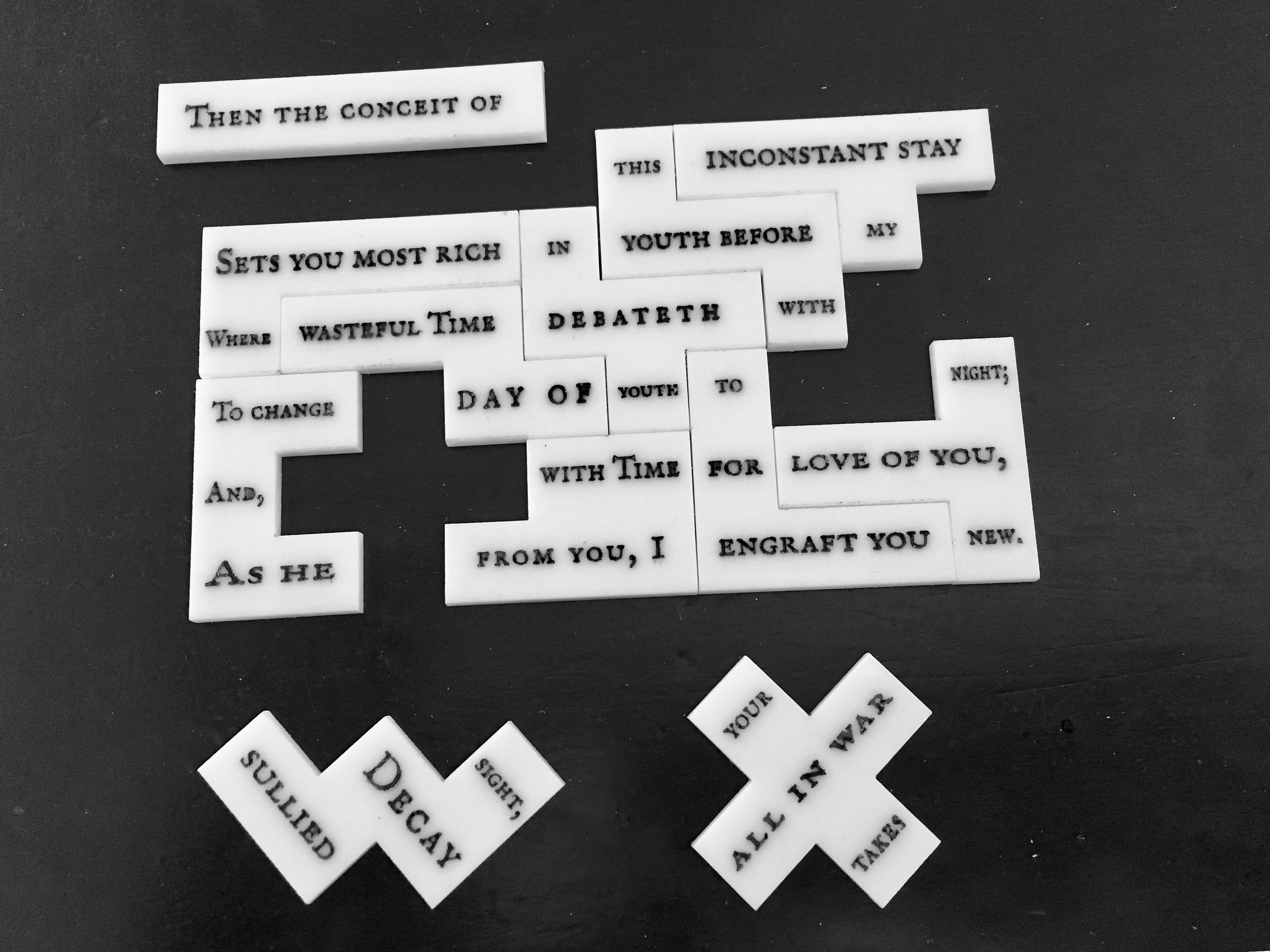
A sonnet–a fourteen line poem–may be divided at its volta, which traditionally separates the eight lines in the opening octave from the six in the concluding sestet. This form is functional: in the Petrarchan tradition of sonnet writing, the sestet provides an answer to the problem posed by the octave.
We’ve taken the thematic of problem and solution literally, incorporating the significance of the sestet in our design-thinking. As fabricators of poem puzzles, the solving of a sonnet sestet is a powerful constraint. While there are 2,339 ways to place 12 pentominos into a 6 x 10 rectangle, only one of these tilings matches the configuration of words in the sixth sonnet in Shakespeare’s sequence of sonnets. Sonnet 12 is the next in the sequence marked as uniquely soluble: one solution matches. And then Sonnet 15 (shown below) is the third sonnet that we can break apart into 12 pentominos. The sestets of Sonnets 1 through 5, 7 through 11, 13, 14, 16, and 17 cannot be divided and dissected according to the constraint chosen.

Only three of first seventeen Sonnets match solutions; moreover, all three sestets match different arrangements in the solution space of 2,339 configurations. When our analysis is brought to all 154 sonnets, we will likely identify more poems as sestet-solveable, although we are hesitant to predict how many will yield to piecification. Our method of analysis locates sestets in the sequence at unpredictable intervals; finding a new sestet-solution feels like the discovery of a prime number.
This computational process is intensive and analytic but the result has an occult, numerological quality that clings to the fabricated puzzles. As I fit polyomino pieces together, I experience a quickening of imagination and understanding, I feel an inevitable structure take shape and participate in its composition. If I remember the original poem, this experience of necessary connection is strengthened in anamnesis. The solution implies an argument from design, and because the poem precedes the puzzle, the shapes must lock together, just so. Each piece, named after a letter, may be imagined in its molecular relation to every other. The whole is orthogonal, rectilinear, fitting.